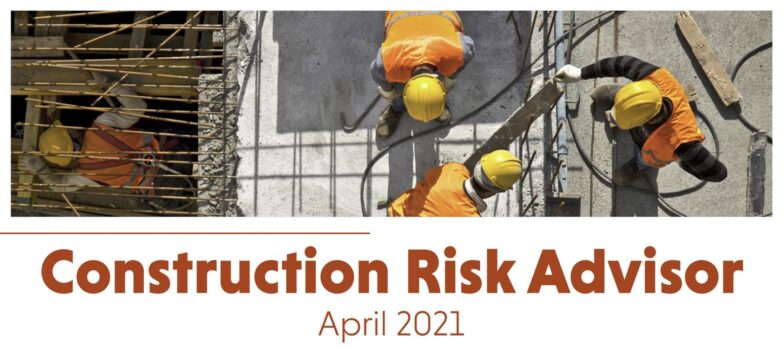 Construction Site Safety Considerations for Spring
Construction Site Safety Considerations for Spring
As the winter season—and the frigid conditions that accompany it—officially concludes, construction employers like you can start preparing for spring projects. Nevertheless, spring weather comes with its own set of risks. After all, this season is often the most difficult to navigate in the scope of working outdoors. Between fluctuating temperatures, frequent rain showers, fog, heavy winds and lightning concerns, it’s important to be aware of spring-related hazards and how to best protect your workforce from these seasonal issues. As such, consider these worksite safety considerations for spring:
- Encourage staff to be prepared. While spring mornings can still entail brisk temperatures, conditions often become significantly warmer by the afternoon—making it tricky for employees to decide what to wear to work. With this in mind, instruct your staff to dress in light, breathable layers that can be removed as temperatures rise. Further, remind employees to routinely apply sunscreen, drink plenty of water throughout the day and always have a rain jacket at the worksite in case showers occur.
- Ensure adequate personal protective equipment (PPE). Effective PPE is a critical element of protecting staff from spring elements. Specifically, employees should have slip- and water-resistant boots to stay safe in wet conditions, reflective vests to remain visible in fog, and safety glasses or goggles that block the sun’s harmful rays. Consider offering anti-fog spray at the worksite to help staff keep their eyewear clear as well.
- Keep equipment clean. Exposure to rain and mud can have detrimental effects on worksite equipment—decreasing vehicle traction, clogging machines with debris buildup and contributing to rust on various tools. To keep equipment safe and operational in these conditions, be sure to clean it on a routine basis (in accordance with the manufacturer’s instructions) and store it in a secure location when not in use. Equipment should also be on a regular inspection and maintenance schedule.
- Establish a lightning response plan. The combination of rain, lightning and electrical equipment at the worksite can be extremely dangerous, making employees vulnerable to electric shock hazards. As a result, make sure you train your staff on electrical safety protocols and proper lockout/tagout procedures. In the event that thunder or lightning occurs, employees should be instructed to stay away from any metal items or structures (including scaffolds).
- Prioritize trench and excavation safety. Spring often signals the start of the earth-moving season. Before such projects begin, give your employees a refresher on trench and excavation safety measures, and review plans for protective systems. Remember that trenches must be inspected daily by the designated competent person to ensure they are safe for entry—especially in wet conditions.
For more industry-specific risk management guidance, contact us today.
© 2021 Zywave, Inc. All rights reserved.

